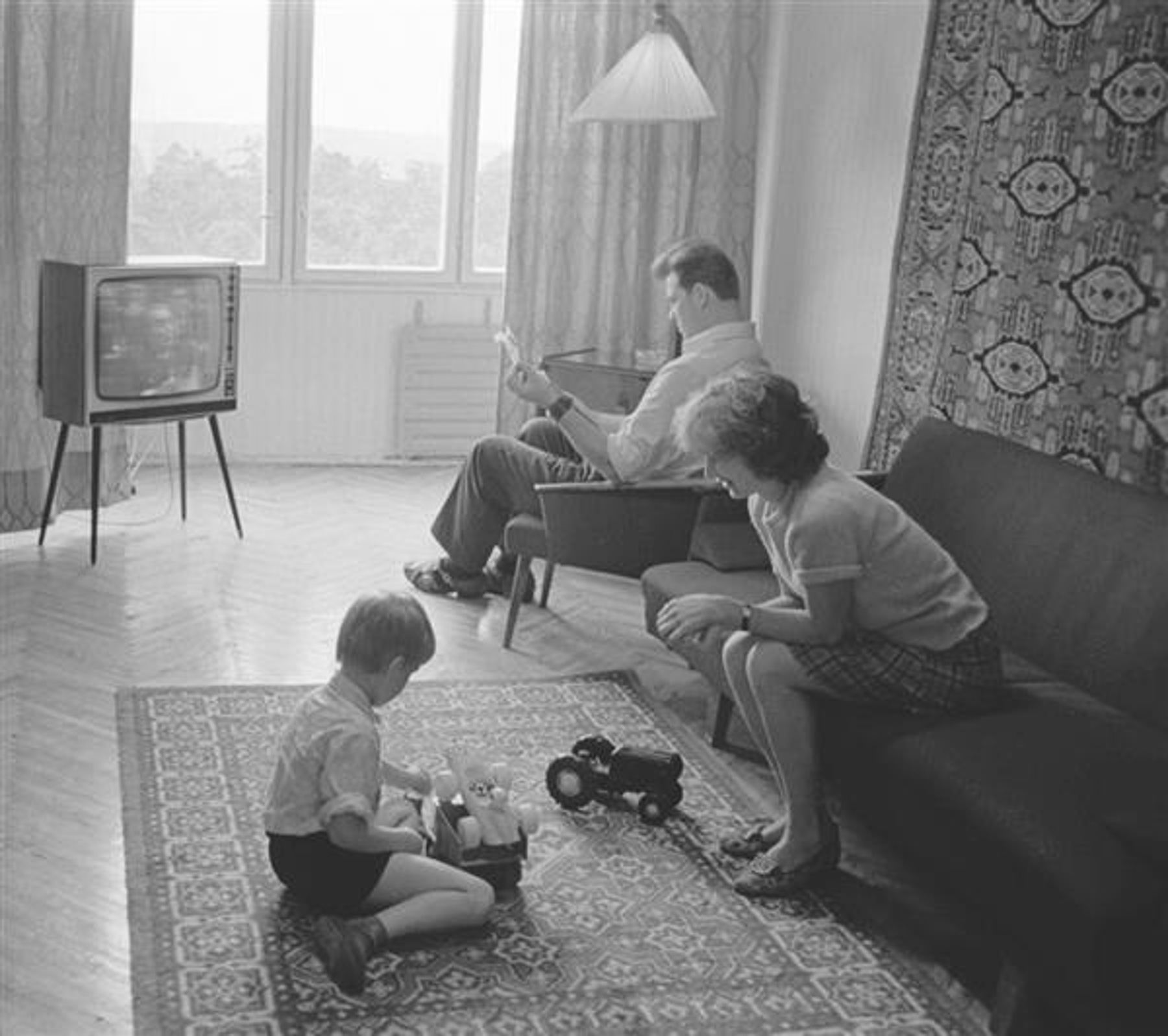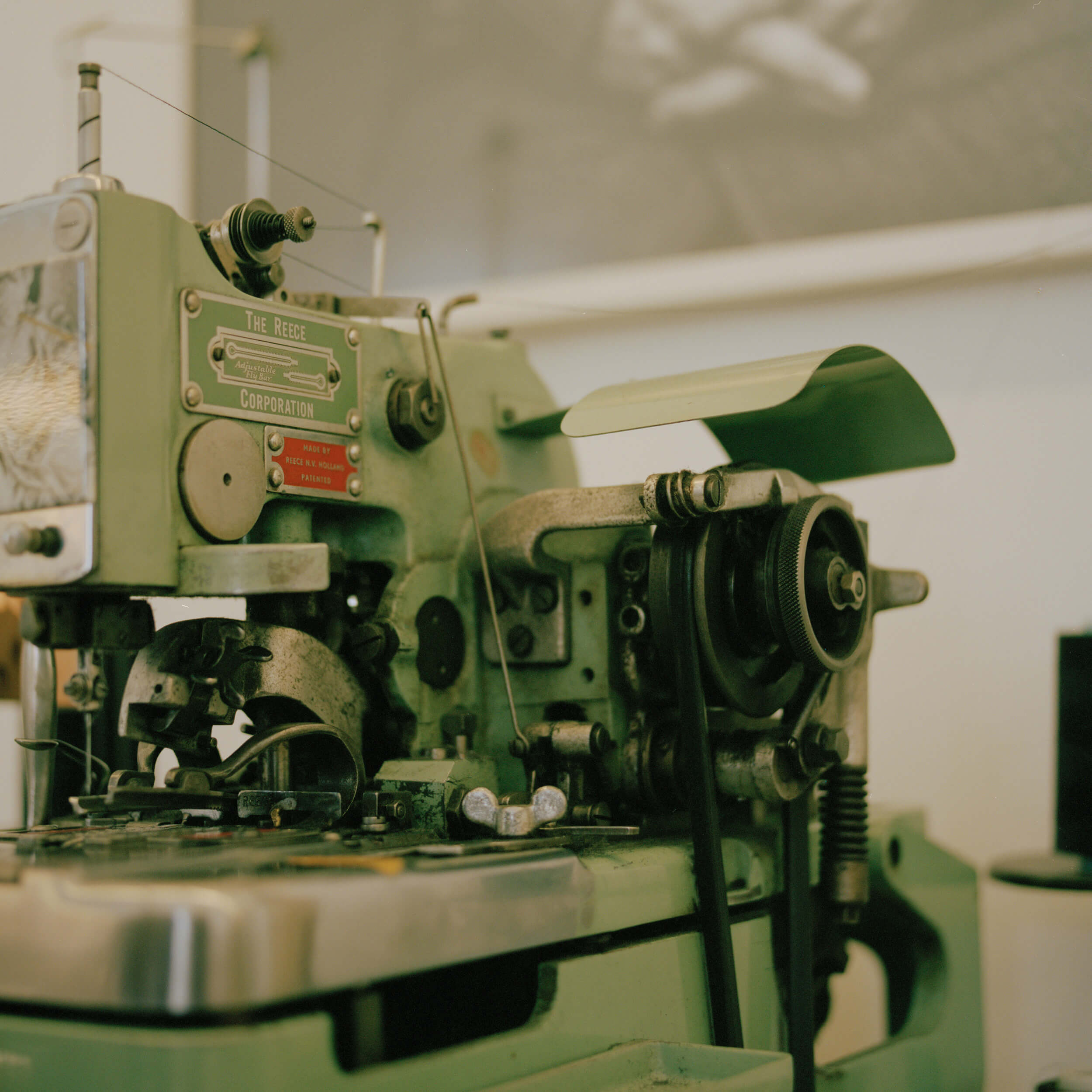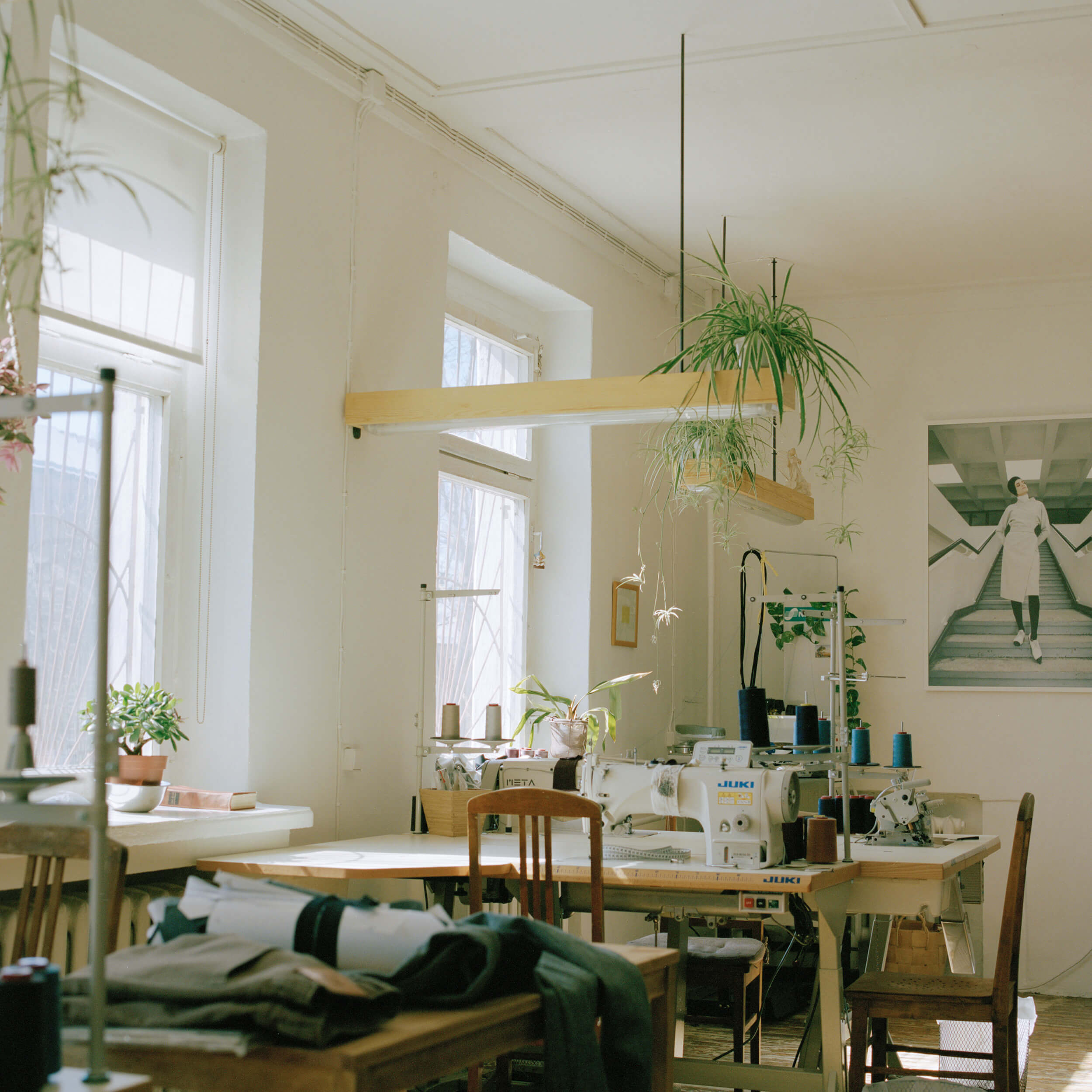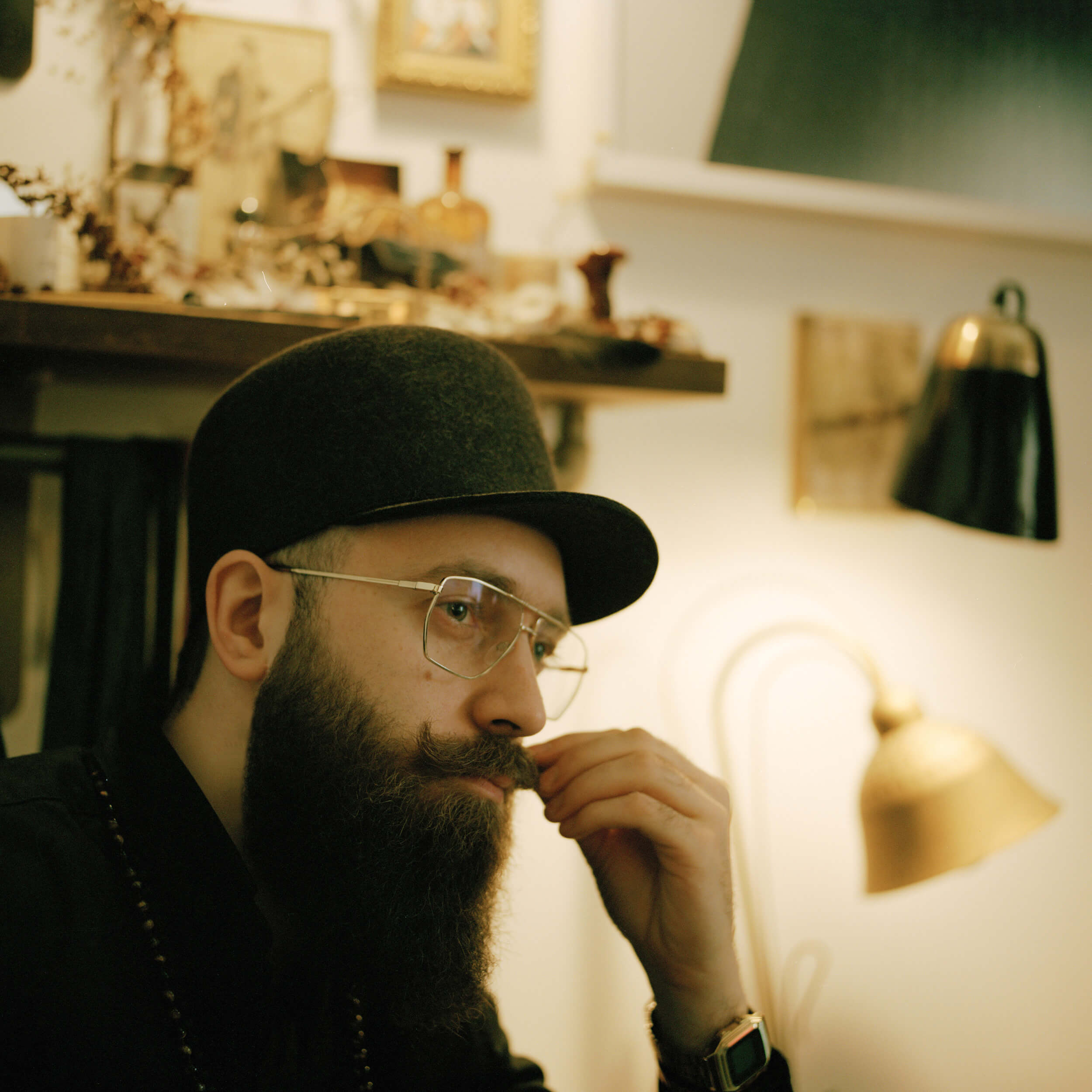Post – Soviet Creatives
Quite recently, a Tallinn based artist Silver Mikiver turned to GUILD and a few other post-soviet creatives to shed some light on how the young, creative scene of Estonia has been affected by one of the most visionary yet brutal oppression of mankind.
Growing up in a country that has been independent since 1991 when the USSR collapsed, Mikiver is very well aware of the contrast between past and present. Through still images and conversations, the photographer explores the lives of creatives depicted with the intention of inspiring the audience to follow their lead in living a truly fulfilled life.
The Soviet Perspective
“Soviet Estonia was a communist country. Many things were different,” explains Mikiver. “Such as food, which was delivered to people through stamps. People queued in the markets and shops to get food, which was always in limited quantities. Lack of abundance was the dominant term in the goods sector.
In Soviet, Estonia borders were closed to travel, which also meant that certain products weren’t shipped into the country at all. I remember how my mother described vividly when people got the chance to visit Finland. It was rather rare to travel independently during Soviet times. My grandfather managed to see Siberia but only because he was recruited to the Russian army service. When people got to see what happened outside of the Soviet world, many things appeared new to them, for example, people hadn’t seen bananas before. Tourists from Soviet Estonia didn’t know that there is a common tradition, which people do before eating bananas, it is called peeling. All jokes aside, when somebody in the family got the chance to travel to Finland and bring back some foreign candy or even Adidas sneakers, they were considered very privileged.”
“By having communism as the rule for the country, life was very much black and white in a sense that everything was dictated and controlled to go along with the Soviet mentality and ideals. When practicing any form of art in Soviet Estonia, you had clear limitations on what you can create and show to other people. Everything which didn’t correlate with the Soviet mentality or was promoting the Western world in any way was suppressed by the authorities. People had to be happy and satisfied with the life they had, which meant that ideas and perspectives that appeared dangerous to the Soviet philosophy had to be removed as soon as possible.
All the housing facilities were owned by the government. Apartments were handed out with jobs, which mainly ranged from manufacturing to the service sector. People lived a life where all the basic needs were met if they followed the rules.”



Post-Soviet Creatives
Mikiver’s interview with the creators of GUILD,
Sten Karik and Joan Hint.
Why do you follow your passion and what keeps you attached?
Joan: I keep asking myself as well. I wonder, why on Earth should I create more clothes, designs, noise on this planet? I’ve been asking this question since the very beginning of our brand and yes, I like to create but is there also something more? I got the answer from Great Spirit in 2012 when the wisest of wise said “oh yes child, this is your thing. You may not yet put the picture together but one day you will and you will see and become an example of how things could be made much, much better. Just trust. And do all with all your heart.”
“Just trust. And do all with all your heart.” — Joan
Whenever in doubt, I remember that.
Sten: It’s something I can’t put in words, feels like it’s the feeling itself that keeps me going. Each day brings new situations, materials, characters, ideas. To keep noticing how little nuances support the revelation of inner characters and to be honoured to cause an experience that puts a smile on someone’s face, that feels just amazing. Feels like we’re extending our own inner selves as well!
Joan: Perhaps we’re blowing someone else’s dreams to life, ever wondered that?
Sten: Might be! When people recognize themselves, they open up. And you know, it’s also pretty magical to know someone’s creating their memories in clothes that you once visioned.

How have you been influenced by the previous Soviet regime?
Joan: Well, it made me creative just as it made my parents creative – it was a time when nothing was found in stores so if you dreamed of something, you had to create it yourself of very limited materials. I see how I still tend to keep and recycle the most random things most people just throw away and for this habit, I am grateful.
But the Soviet regime also had its bitterness. Many of my family members were executed or deported to Siberia in the 1940s and those who stayed experienced constant fear. If the writers didn’t write what was expected or any rebellious hint was given, things would’ve to change real fast – our house was also built with numerous secret passages and hideaways which as a kid, I loved a lot. The ingenious scientist Johannes Hint, the uncle of mine and the only one in the whole Soviet Union who managed to successfully run a company – his creations earned millions for USSR and he himself lived in poverty. Besides his technological inventions, he found cures for illnesses and yes, at one point got arrested by Soviet officials under fabricated charges. He took a train to see his dying wife and was arrested during that journey. He died a few years later in Patarei fortress-prison, they never saw each other again.. All his possessions and discoveries were confiscated. And you know, even if it all happened 40 years ago, members of our family still carry.. certain sadness. I feel it right now, on this very moment when I share the story with you. I see it in Soviet architecture as a lot of it was built with materials he invented. I saw it in my grandmother’s eyes, I feel it whenever I look inside. The sadness came in my veins and it takes quite some meetings with my higher self to truly forgive, and let go.

If you would have to start your journey again, would you do anything differently?
Sten: Sure, there are many things we could’ve made differently but it depends on the angle we look at it today. Many projects were clearly waste of time and finances but these situations are what teach and grow us most. This is when the magic starts to happen. You start pushing your limits and you see how there’s a solution for each situation and each step opens new doors. We make mistakes in order to grow, to understand and let go of our doubts. Don’t ever see failures as a bad thing, it may seem bad at the moment it happens but it always makes room for something else, something better.
Joan: “Sometimes the wrong choices bring us to the right places”, right?

What are your three beliefs in order to create the desired reality?
Joan: Vision. Trust. Gratefulness
Sten: Believe in yourself, take action. Trust.
Could you share some hardships, which you have overcome?
Sten: Once in Barcelona we lost it all and lived with red euro cents for a few weeks – that was quite something. Actually there are many things that have “gone wrong” – a few years ago unpublished Chapter Three collection photos were stolen from our photographer’s home. The material was so new that only he had it all in full resolution, ready for print. A year’s work for us and basically a minute before the sales period started. To lose it all – well, we were in a position to skip a year and.. survive! In the end, it turned out great as we had more time to think about everything, to be prepared. There have also been many delays on crucial moments – materials, labels, fabrics but now we know, the delays will always be there – it’s just one peculiar, the endless rhythm of Life.

